One of the worldʼs biggest cultural fiestas, Kolkataʼs amazingly vibrant Durga Puja is an experience of a lifetime.
By ANUBHUTI KRISHNA
Colourful, electric, and musical. Kolkata’s famous Durga Puja festival
is considered by many to be the world’s largest art installation. Others think of it as a multi-hued carnival. And then there are those who consider it sheer madness. Interestingly, each of these impressions are equally apt! After all, how else would you describe a gala event in which almost the entire city is out on the streets, celebrating Bengal’s art, music, food, and most of all, its zest for life, for five straight days and nights? Nothing quite prepares you for Durga Puja’s (pujo) fervour. Not the books you read, nor the pictures you see, or even the stories you hear. It’s only when you land in the city that you truly experience the energy, spirit, and unabated joy all around. From the heady scent of night-blooming jasmine hanging heavy in the moist air to the unmissable din of animated conversations, mixed with soothing Bengali melodies on loudspeakers and the festive finery decorating every street—everything spells excitement.
Artistic Vistas
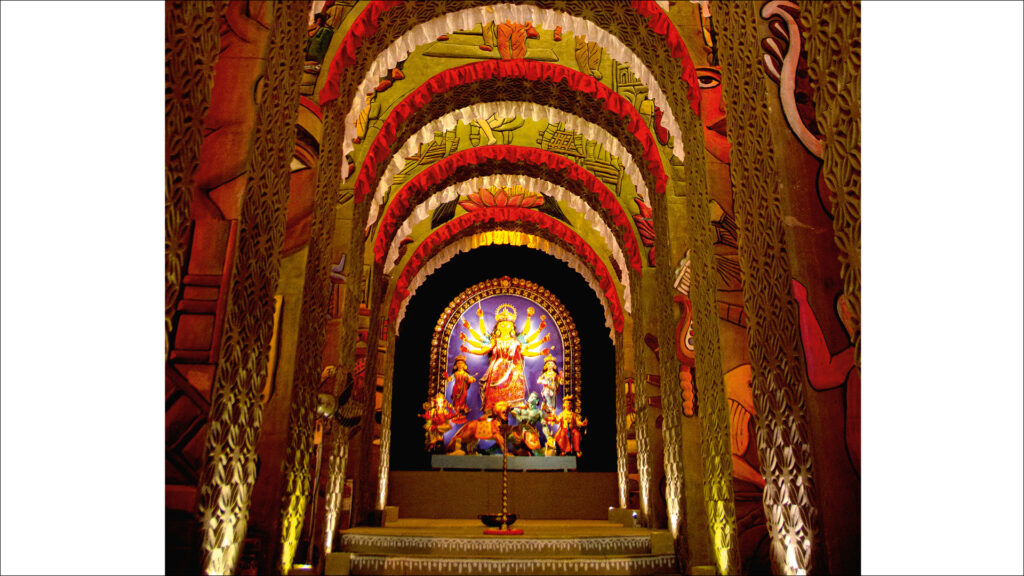
other mythological characters
It is, however, art that remains the most striking aspect of the celebration. Kolkata’s love for this creative form reaches its zenith during the festival as the entire megapolis transforms into one gigantic art gallery. Every corner turns into a blank canvas where local artists paint their visions. Streets are decorated with large, traditional alpanas (decorative designs), artistic hoardings loom over low buildings, and hand-painted murals adorn the walls. Colourful pandals, big and small, showcase the state’s artistic traditions— imagine a richly decorated, intricately designed pavilion depicting scenes from the life of Goddess Durga, another adorned with colourful toy kaleidoscopes, and yet another, in the shape of a large banyan tree made with earthen pots. The ingenuity on display here and the common man’s appreciation for the artists’ creativity is remarkable.
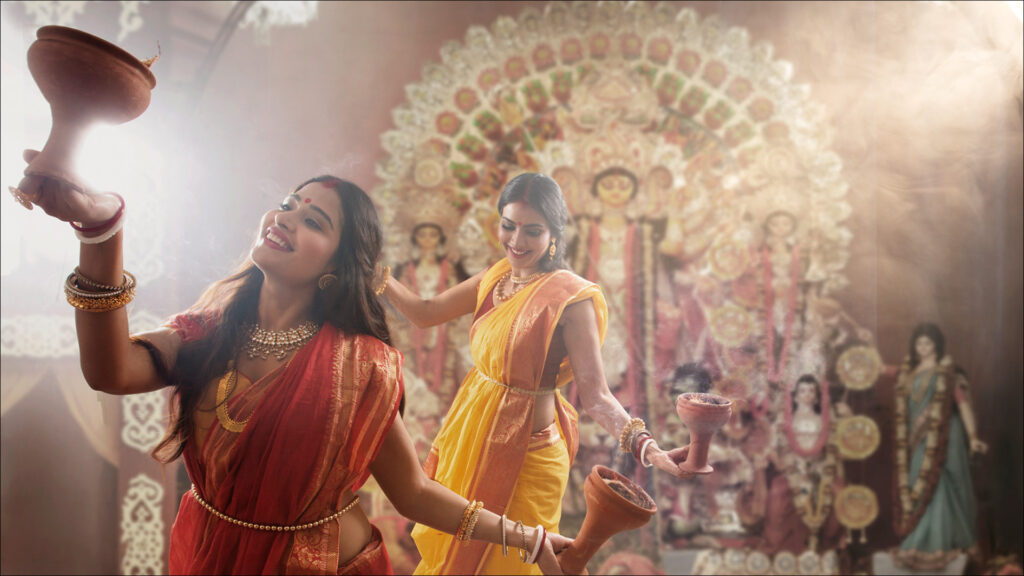
Then, of course, there are the larger-than-life structures—an Eiffel Tower here, a Colosseum there, a model of Khajuraho; if there is a famous monument anywhere in the world, chances are there’s a pandal modelled after it. There’s much to see outside the pandals,
too. In the days preceding the festival, areas surrounding popular pujos turn into expansive fairgrounds with toy makers, balloon sellers, book stalls, craftsmen, street-food vendors, and hawkers showcasing their wares to enchant the crowds. Enthusiastic locals and tourists from nearby towns, meanwhile, travel the length and breadth of the capital city to ensure they don’t miss any mela or pandal. Dressed in their pujo best (most aim to wear new clothes all five days), unhindered by the heat and humidity, jostling their way through serpentine queues, manoeuvring frenetic crowds, and walking for miles from one pandal to another, and dancing in celebration, it is
they who make Durga Puja truly festive.
Food, Glorious Food
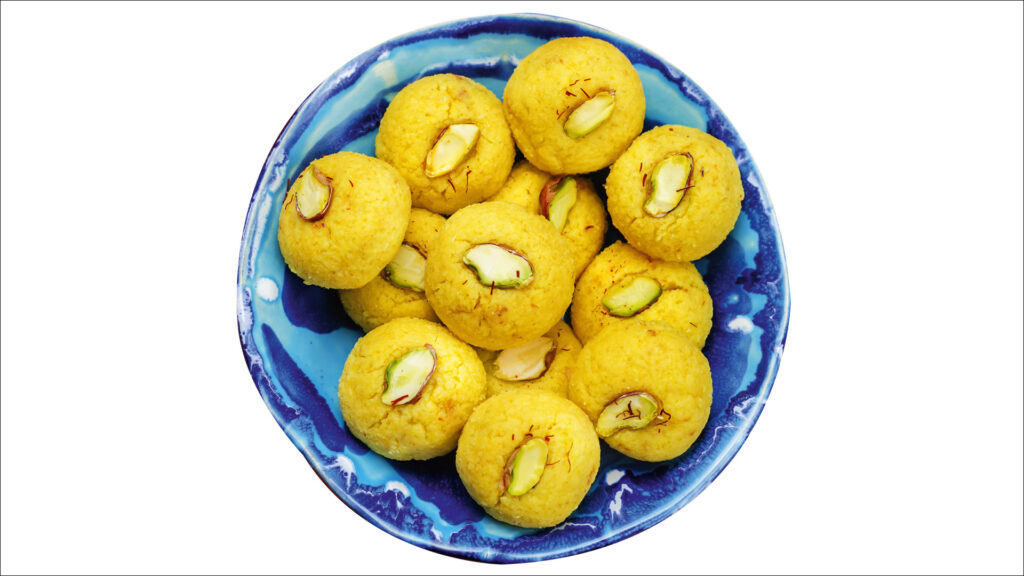
The other thing that makes pujo an experience to remember is its food. There’s a running joke about how while the rest of the country fasts for Navratri (a Hindu festival), Kolkata feasts. For a city that loves its food as much as Kolkata does, to even imagine a celebration without it is sacrilege. And so, for the five days of Durga Puja, it turns into a 24-hour food fiesta. Sweet shops spill onto main roads; restaurants, dhabas, cafés, and even clubs and pubs work round the clock. And entire streets turn into exclusive food zones offering everything from biryani to burgers, chow mien to samosas, pizza to parathas, and ice-creams to mishti doi (a Bengali sweet). It is not uncommon for people to make their annual trip to the city just for
the pujo feast.
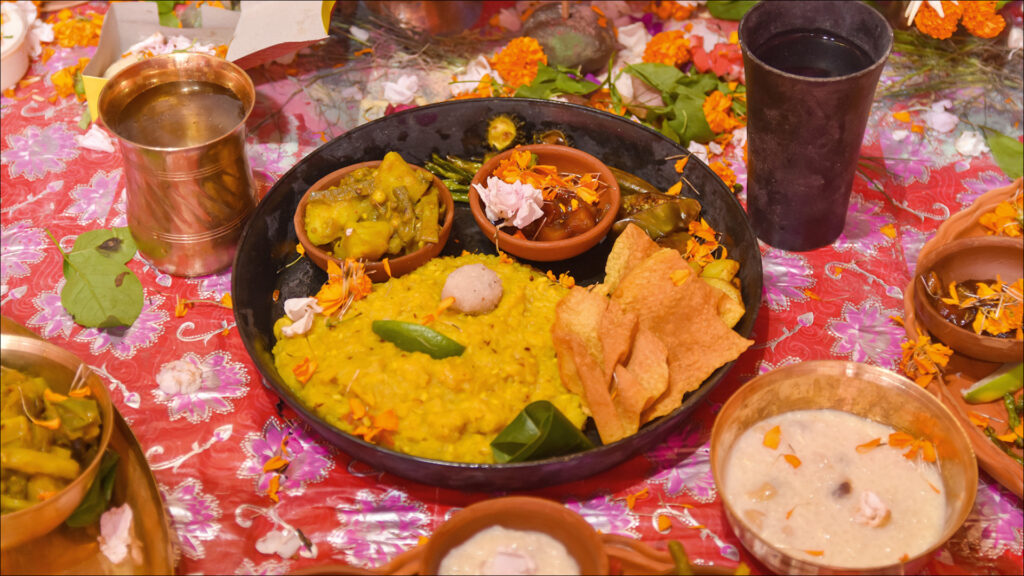
The most unique aspect of this delicious adventure remains the traditional community bhog, an elaborate repast prepared by skilled chefs, first offered to the goddess, and then shared among people. Entire neighbourhoods gather around their local pandal to enjoy their meals together, be it the basic yet coveted khichri and labra (a special mixed vegetables dish) bhog or more fancy menus of pulaos, luchis (deep-fried breads), curries, and sweets. It is also here, in these intimate gatherings, that the true spirit of community and brotherhood—values at the heart of pujo celebrations—are lived to their fullest. What is a celebration, after all, if not shared with your loved ones?
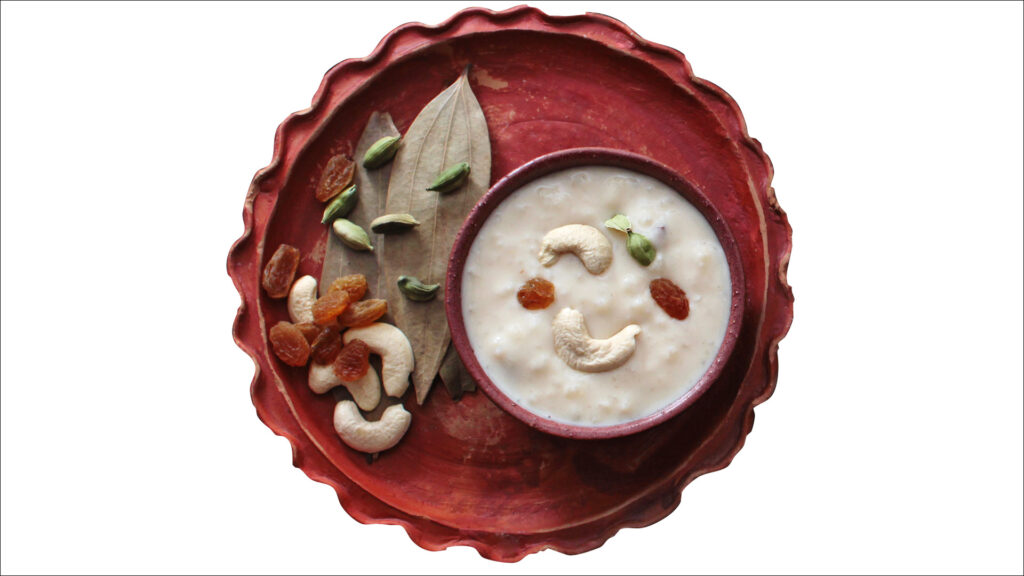
GETTING THERE
Vistara offers daily direct flights from Delhi and Mumbai to Kolkata.




